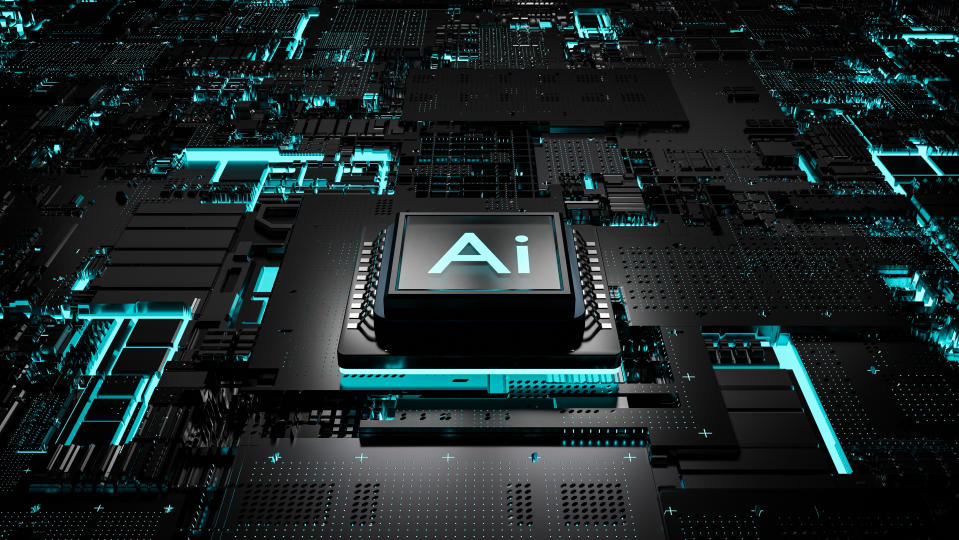AMD Might Not Beat Nvidia, but Here's Why It's Still a Long-Term Buy

With a 90% market share, Nvidia (NASDAQ: NVDA) reigns as the undisputed King of the Artificial Intelligence (AI) chip market. Yet, in an ironic twist, the company's very success has created favorable conditions for its rivals to take down the AI titan a notch or two from atop its perch. Advanced Micro Devices (NASDAQ: AMD) realizes the opportunity a supply-constrained Nvidia has presented and intends to fully exploit these fortuitous circumstances to its advantage.
Why the Nvidia spillover effect creates unparalleled opportunities for AMD
Nvidia's unprecedented revenue growth, its rising stock price and consequential market capitalization have all demonstrated that the AI infrastructure market is sustainable and unbounded. Hyper-demand for Nvidia's chips has dispelled any lingering doubts that AI mania is merely another dot.com bubble waiting to burst.
Graphics Processing Unit (GPU)chips are the lifeblood of generative AI systems. Semiconductor companies, such as AMD, provide the essential chip architecture capabilities necessary to create and sustain such systems. Tech companies that build or design these indispensable components are the only businesses at present able to convert the AI hype into an appreciable revenue reality.
Hardware companies such as Dell and Lenovo, as well as cloud providers, need AI chips immediately at competitive prices to meet rising customer demand. They can't secure chips from Nvidia fast enough, which means buying GPU hardware from other sources.
Realizing the profit potential presented by this current supply and demand imbalance, AMD has stepped into this supply void swiftly. It has seized this opportunity by quickly ramping up production of its AI GPU series 1300 processors as an alternative to Nvidia's offerings for a tech sector hungry for data center chips.
AMD looks poised to grow its AI presence
Like other semiconductor companies, over the past two years, AMD has suffered from a chip glut that is only now starting to dissipate as tech companies wind down their excess inventories. Poor performance in the company's two non-data center segments resulted in tepid overall revenue growth of 2% year-over-year.The company's gaming segment was down 48% year-over-year; its embedded segment, which provides processing needs for the industrial, automotive and testing industries, fell 46% year-over-year.
The more telling metric for ascertaining the company's prospects, however, is the astounding growth in the company's data center business. Revenues from this segment grew an astounding 80% year-over-year to $2.3 billion. The client segment, which provides CPUs for servers, laptops, mobile and desktop devices, surged 85% to $1.4 billion.
Accelerated growth from the data center and client segments prompted the company to raise its full-year 2024 guidance from $3.5 billion to $4.0 billion. CEO Lisa Su stated that based on customer engagements, these estimates are realistic.
Over time, earnings from AMD's cloud GPU sales will far surpass that of the two non-data center segments that have dragged down overall revenue.
A compelling investment opportunity for long-term appreciation
Given its flat year-over-year revenue growth, at 46 times the next twelve months' earnings, AMD's current valuation appears to be stretched. At 47 for the same multiple, Nvidia barely beats AMD by this same metric, even though its recent growth rate has been much greater.
Since it's categorized as a semiconductor stock, AMD's current valuation, however, doesn't fully reflect its long-term revenue potential. For a company just entering the AI GPU business, AMD's data center growth was off the charts. The market will continue to respond favorably to AMD's offerings because cloud providers welcome the competition. Many don't want to be locked into Nvidia's ecosystem.
By some estimates, the AI market could grow to $403 billion by 2027 and $1 trillion by 2030. These projections demonstrate the extent to which AMD can benefit from AI's long-term revenue potential.
Cloud providers want competitive chip pricing which opens a wide door for AMD and others to carve into Nvidia's market share. With its focused AI data center strategy, over time, AMD's valuation as an AI stock will grow, as the company's increasing earnings reveal that its long-term AI growth potential is sustainable.
Investors shouldn't expect any short-term gains from the stock. Purchasing AMD is suitable only for those with a long-term investment horizon.
Should you invest $1,000 in Advanced Micro Devices right now?
Before you buy stock in Advanced Micro Devices, consider this:
The Motley Fool Stock Advisor analyst team just identified what they believe are the 10 best stocks for investors to buy now… and Advanced Micro Devices wasn’t one of them. The 10 stocks that made the cut could produce monster returns in the coming years.
Consider when Nvidia made this list on April 15, 2005... if you invested $1,000 at the time of our recommendation, you’d have $771,034!*
Stock Advisor provides investors with an easy-to-follow blueprint for success, including guidance on building a portfolio, regular updates from analysts, and two new stock picks each month. The Stock Advisor service has more than quadrupled the return of S&P 500 since 2002*.
*Stock Advisor returns as of July 2, 2024
The Motley Fool has positions in and recommends Advanced Micro Devices, Microsoft, and Nvidia. The Motley Fool recommends the following options: long January 2026 $395 calls on Microsoft and short January 2026 $405 calls on Microsoft. The Motley Fool has a disclosure policy. John Kinsellagh has no positions in any of the stocks mentioned in the article.
AMD Might Not Beat Nvidia, but Here's Why It's Still a Long-Term Buy was originally published by The Motley Fool


